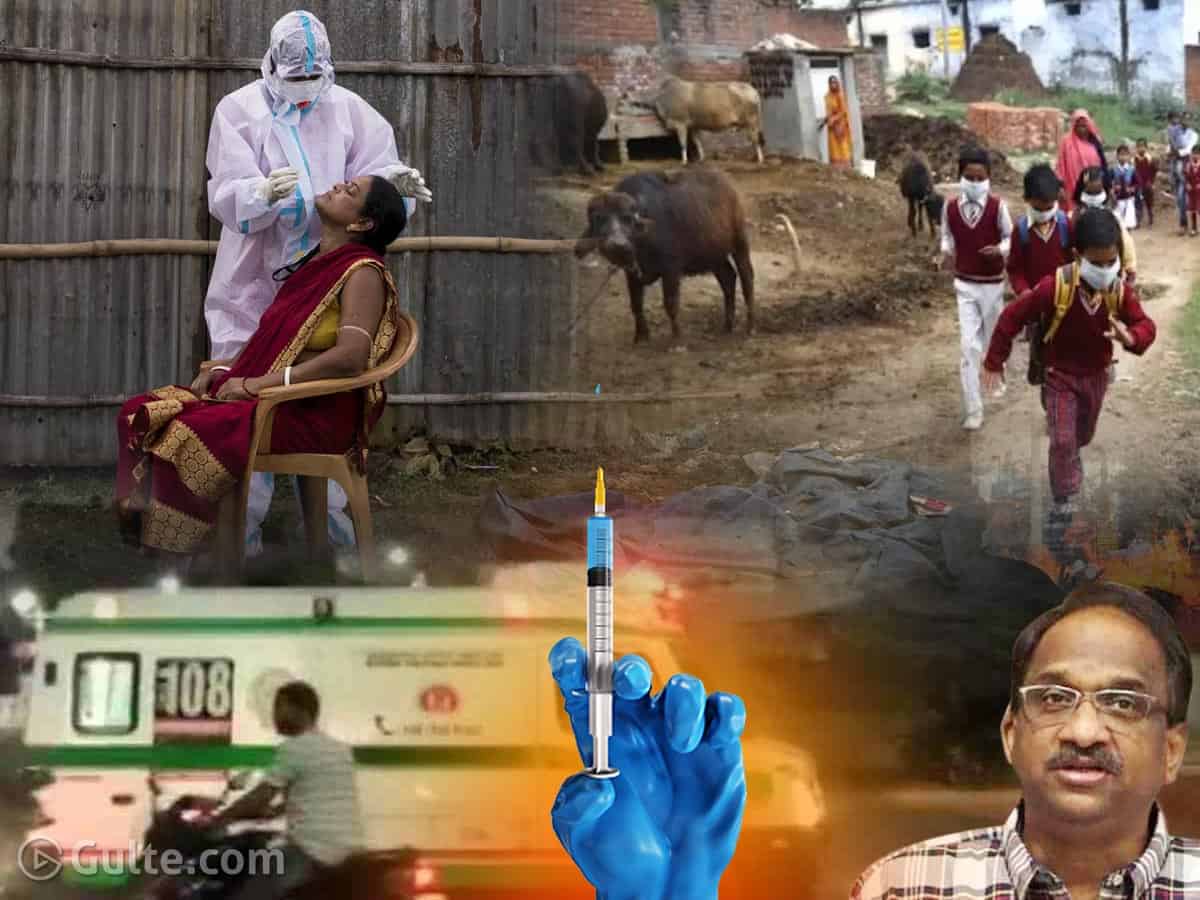By Prof K Nageshwar
As per Government of India’s statistics, 516 out of 734 districts are reporting a test positivity rate of above ten percent revealing the fact that rural India is in the grip of the second wave. Yet, the vaccination in rural India is continuing at a slow pace. This situation of rising in cases combined with the slow pace of vaccination keeps rural India on a COVID time bomb, calling for an urgent intervention to prevent yet another surge in cases.
By mid-May 2021, rural and semi-rural areas of our country accounted for 65 percent of the total COVID cases. This stood at 52% in March 2021 indicating the rapid spread of the pandemic in rural areas.
There is a huge rural-urban gap in vaccination. By May 14, an estimated 12 percent of people in the rural areas have received one dose of the COVID-19 vaccine. In contrast, an estimated 30% of residents in urban areas received at least one shot. Only an estimated 2.6% percent of rural Indians received both doses, while the corresponding figure for urban India is 7.7%.
Similarly, in Urban districts of Bengaluru, Mumbai, and Chennai, cumulatively, more than 500 tests have been conducted for every 1,000 inhabitants. Whereas in the rural districts of Gadchiroli in Maharashtra, Tirupathur in Tamil Nadu, Chamrajanagara in Karnataka, less than 50 tests have been conducted cumulatively for every 1,000 inhabitants.
Rural areas relatively escaped severe first wave due to a host of factors like low population density, lower incidents of comorbidity conditions like blood pressure, diabetics, and cardiovascular problems. Similarly, villagers live in better-ventilated houses and work in open spaces. The villagers are also not exposed to large congregations like shopping malls, multiplexes, etc. seen in urban areas. But, things changed in the second wave due to large political and religious congregations hitting the rural areas.
What should be done?
A comprehensive rural health strategy should immediately be put in place to avert an unprecedented COVID crisis in the hinterland. Such a strategy should include
- Emergency patient transport should be kept on standby.
- Accelerate vaccine delivery.
- Massively expand the surveillance.
- Urgently revamp the health infrastructure.
- Expand the testing, tracing, isolation, and referral services.
- Setup dedicated COVID care centres.
- Mobilise the local bodies, communities in COVID management.
- Setup mobile laboratories for composite clinical diagnosis.
- Restrict movement between urban and rural areas unless essential.
- Prohibit large gatherings for at least six months.
- Screen all the people for blood pressure, diabetics, and other comorbidity conditions to identify the vulnerable population as prescribed in the comprehensive primary health care of National Health Policy, 2017.
- Decentralise planning, delivery, and monitoring of health services.
- Real-time data should be collected and analyzed at the local level for ensuring a rapid response.
- Rush covid medical supplies like test kits, essential medicines.
- Ensure availability of trained health personnel, as quacks still dominate delivery of health services in rural areas.
By Prof K Nageshwar
For Prof K Nageshwar’s views please subscribe to Telugu Videos | English Videos
Tags Covid Cases India Rural India Covid
 Gulte Movie News And Politics
Gulte Movie News And Politics

















